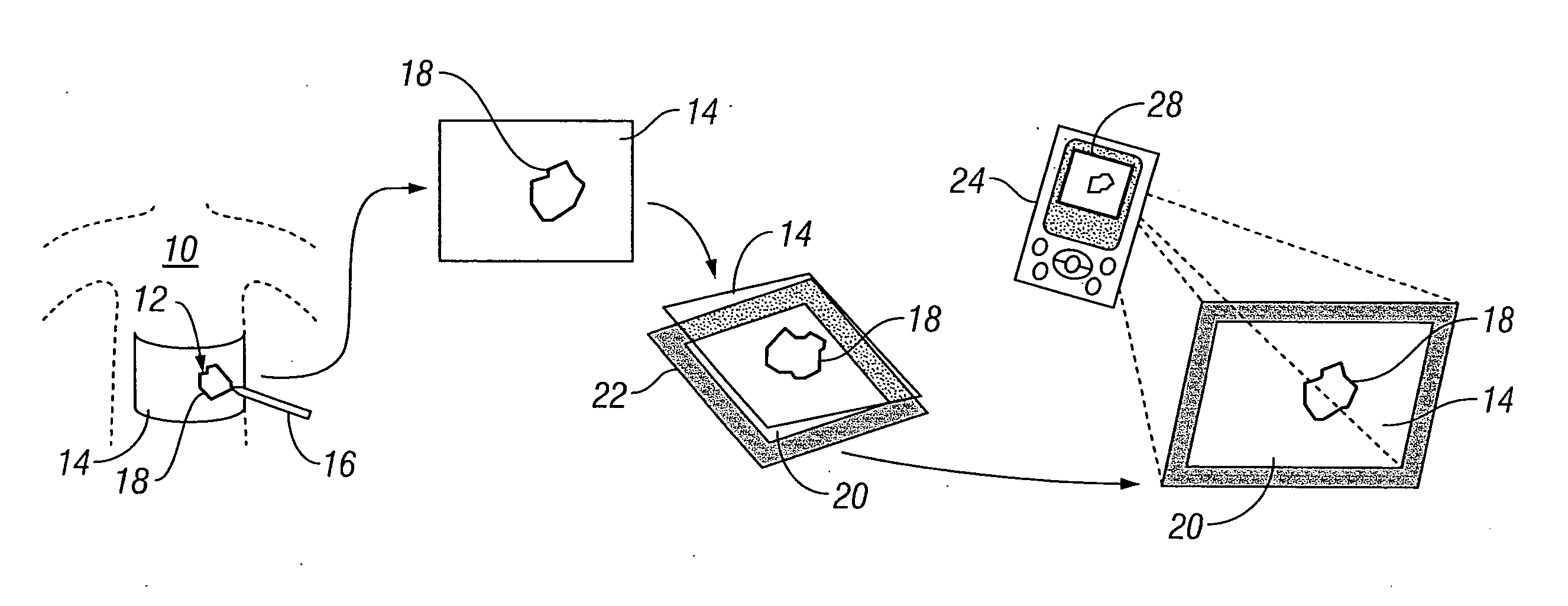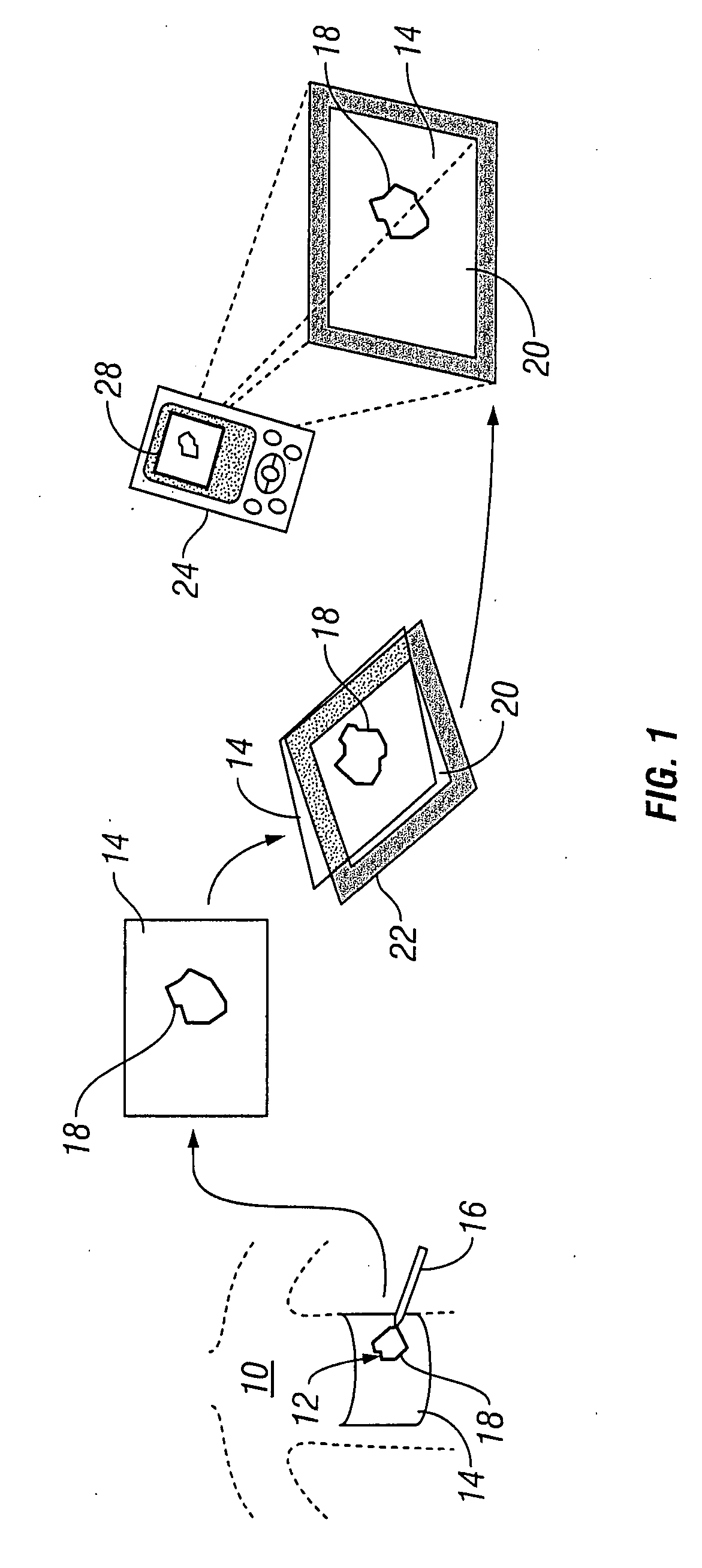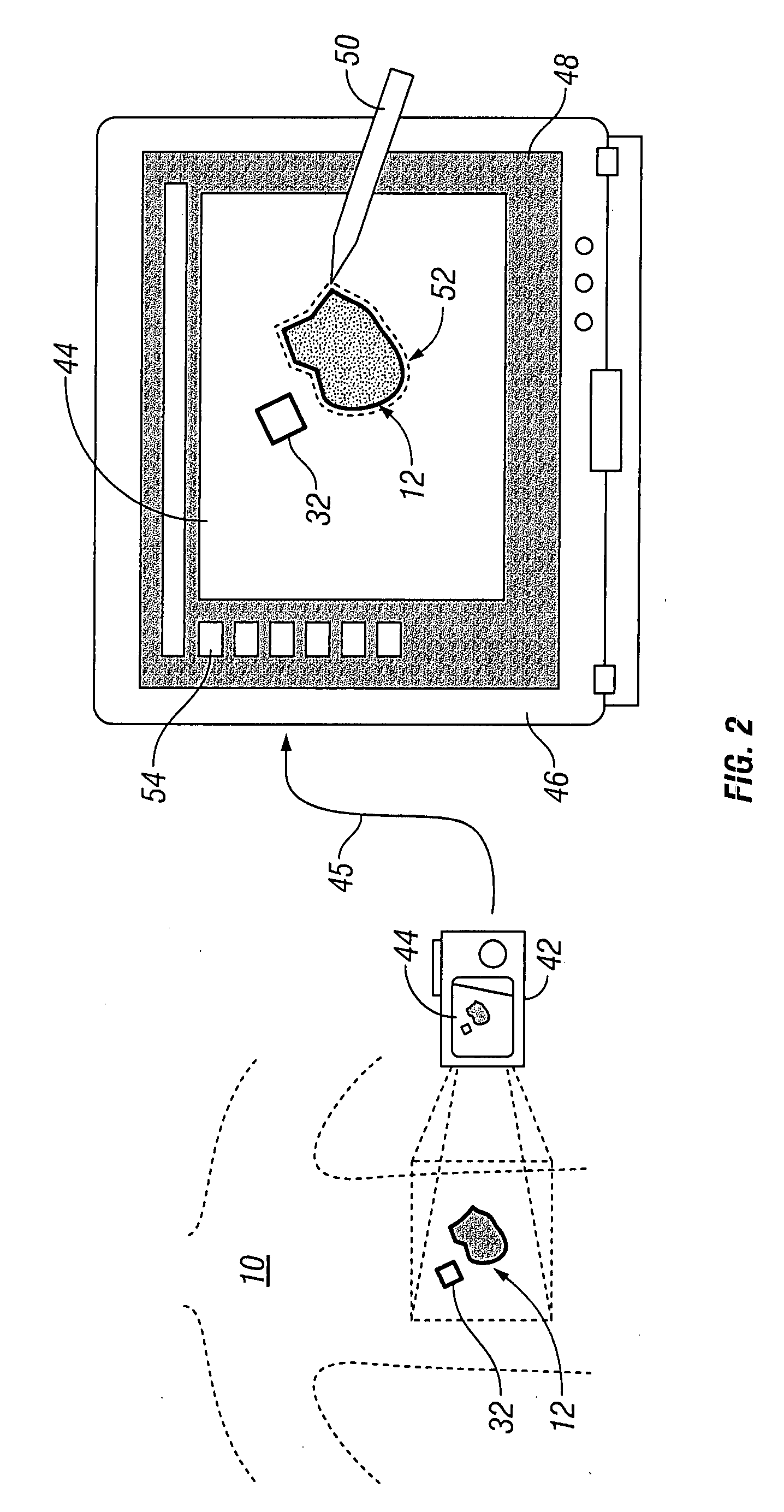Systems and methods for wound area management
a wound and system technology, applied in the field of wound area management, can solve the problems of inability to provide the necessary information to health care providers, inability to accurately measure and track the size of wounds, and high complexity of systems, so as to achieve non-invasiveness, cost effectiveness, and repeatability.
- Summary
- Abstract
- Description
- Claims
- Application Information
AI Technical Summary
Benefits of technology
Problems solved by technology
Method used
Image
Examples
Embodiment Construction
[0037] Reference is first made to FIG. 1 for a brief description of the specific components required within the system of the first preferred embodiment for implementing the methodology of the invention. In general the system involves the use of a transparent or translucent film positioned on the patient over the wound site onto which an outline trace of the wound perimeter is made with a permanent felt tip pen or the like. This transparent or translucent film bearing the wound trace is then positioned on a rectangular template frame, which in the preferred embodiment comprises a white background surrounded by a wide black band (frame). A clinician then uses a preprogrammed handheld digital processor and digital camera device (a PDA fitted with a camera, for example) to capture an image of the film / template assembly. Processing software programmed in the device identifies and quantifies the wound trace and the surrounding frame (as a reference) in order to calculate a wound area. Th...
PUM
 Login to View More
Login to View More Abstract
Description
Claims
Application Information
 Login to View More
Login to View More - R&D
- Intellectual Property
- Life Sciences
- Materials
- Tech Scout
- Unparalleled Data Quality
- Higher Quality Content
- 60% Fewer Hallucinations
Browse by: Latest US Patents, China's latest patents, Technical Efficacy Thesaurus, Application Domain, Technology Topic, Popular Technical Reports.
© 2025 PatSnap. All rights reserved.Legal|Privacy policy|Modern Slavery Act Transparency Statement|Sitemap|About US| Contact US: help@patsnap.com



